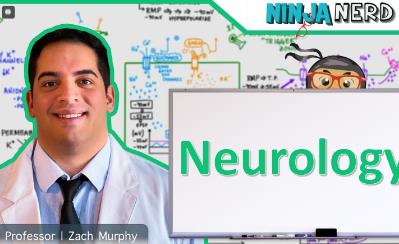- Anatomy of the Brain | Model
- Anatomy of the Brain | Dissectible Model
- Ventricles of the Brain | Anatomy Model
- Anatomy of the Spine | Model
- Neuron Anatomy & Function
- Resting Membrane Graded Action Potentials
- Glial Cells: Astrocytes Oligodendrocytes Schwann Cells Ependymal
- Cerebrum: Frontal Lobe Anatomy & Function
- Cerebrum: Parietal Lobe Anatomy & Function
- Cerebrum: Temporal Lobe Anatomy & Function
- Cerebrum: Occipital Lobe Anatomy & Function
- Cerebral Cortex Anatomy & Function: Overview
- Basal Ganglia Anatomy & Function | Direct & Indirect Pathways
- Hypothalamus Anatomy & Function
- Thalamus Anatomy & Function
- Limbic System Anatomy & Function
- Midbrain Anatomy & Function
- Pons Anatomy & Function
- Medulla Anatomy & Function
- Cerebellum Anatomy & Function
- Physiology |Brain Meninges | Epidural Subdural Subarachnoid & Intracerebral H
- Gross Anatomy of the Spinal Cord and Spinal Nerves
- Spinal Cord: Gray Matter Structure & Function
- Spinal Cord: White Matter Structure & Function
- Ascending Tracts | Dorsal Column: Medial Lemniscus Pathway
- Ascending Tracts | Spinothalamic Tract
- Ascending Tracts | Spinocerebellar Tract
- Ascending Tracts | Pain Modulation: Gate Control Theory
- Descending Tracts: Corticobulbar Tract
- Descending Tracts: Corticospinal Tract
- Descending Tracts: Vestibulospinal Tract
- Descending Tracts: Pontine Reticulospinal Tract
- Descending Tracts: Rubrospinal Tract
- Descending Tracts: Medullary Reticulospinal Tract
- Descending Tracts: Overview
- Spinal Cord Meninges
- Spinal Cord Blood Supply
- Spinal Cord: Stretch Reflex | Muscle Spindle
- Spinal Cord: Golgi Tendon Organ Reflex (GTO)
- Upper Motor Neuron vs Lower Motor Neuron Lesion | UMN vs LMN Lesion
- Autonomic Nervous System
- Sympathetic Nervous System
- Adrenergic Receptors
- Parasympathetic Nervous System
- Cholinergic Receptors
- Enteric Nervous System
- Cranial Nerves: Overview
- Olfactory Nerve: Cranial Nerve I
- Optic Nerve | Cranial Nerve II: Visual Pathway and Lesions
- Oculomotor Nerve: Cranial Nerve III
- Trochlear Nerve: Cranial Nerve IV
- Trigeminal Nerve: Cranial Nerve V
- Abducens Nerve: Cranial Nerve VI
- Facial Nerve: Cranial Nerve VII
- Vestibulocochlear Nerve | Cranial Nerve VIII: Auditory Pathway
- Vestibulocochlear Nerve | Cranial Nerve VIII: Vestibular Pathway
- Glossopharyngeal Nerve: Cranial Nerve IX
- Vagus Nerve: Cranial Nerve X
- Accessory Nerve: Cranial Nerve XI
- Hypoglossal Nerve: Cranial Nerve XII
- Gustation (Taste Pathway)
- Cervical Plexus
- Brachial Plexus
- Lumbar Plexus
- Sacral Plexus
- Nerve Injury & Repair: Wallerian Degeneration & Regeneration
- Stroke Syndromes: MCA ACA ICA PCA Vertebrobasilar Artery Strokes | Pathophys
- Midbrain Lesions: Benedikt Weber Claude Parinaud Syndrome
- Pons Lesions
- Medullary Lesions: Medial and Lateral Medullary Syndromes
- Acute Ischemic Stroke: Etiology Pathophysiology Clinical Features Diagnostics
- Intracerebral Hemorrhage (ICH) Etiology Pathophysiology Clinical Features ...
- Subarachnoid Hemorrhage Etiology Pathophysiology Clinical Features Treatment
- Ischemic and Hemorrhagic Strokes | High Yield
- Seizures | Etiology Pathophysiology Clinical Features Treatment ...
- Febrile Seizures | Etiology Pathophysiology Clinical Features Treatment
- Multiple Sclerosis | Etiology Pathophysiology Types of MS Clinical Features..
- Acute Disseminated Encephalomyelitis | ADEM
- Central Pontine Myelinolysis | Osmotic Demyelination Syndrome
- Transverse Myelitis
- Spinal Cord Lesions: Anterior Cord Posterior Cord Central Cord Brown-Sequard
- Types of Headaches|Primary vs. Secondary | Migraine Cluster Tension Headaches
- Cerebral Palsy: Etiology Pathophysiology Complications Treatment
- Epidural Hematoma| Anatomy Etiology Pathophysiology Clinical Features Treatm
- Subdural Hematoma|Anatomy Etiology Pathophysiology Clinical Features Treatm
- Migraine Medications
- Clinical Skills | Cranial Nerves Exam
- Clinical Skills | Upper Limb Neuro Exam
- Clinical Skills | Lower Limb Neuro Exam
- Clinical Skills | Gait Examination
- Clinical Skills | Cerebral Palsy Physical Exam
神经学是一门研究神经系统功能障碍和疾病的学科,涉及大脑、脊髓、周围神经和神经肌肉传导等方面的疾病诊断、治疗和研究。神经学课程旨在培养学生对神经系统疾病的认识和处理能力,使他们成为优秀的神经科医生或研究人员。
Neurology is a discipline that studies disorders and diseases of the nervous system, involving the diagnosis, treatment, and research of diseases related to the brain, spinal cord, peripheral nerves, and neuromuscular transmission. The neurology course aims to train students in understanding and managing diseases of the nervous system, preparing them to become excellent neurologists or researchers.
神经学课程内容包括解剖学、生理学、病理学、临床诊断和治疗等多个方面。学生将学习神经系统的结构和功能,了解各种神经系统疾病的发病机制和临床表现,掌握相应的诊断和治疗方法,如神经影像学、脑电图、脑脊液检查等。
The neurology course covers various aspects including anatomy, physiology, pathology, clinical diagnosis, and treatment. Students will learn about the structure and function of the nervous system, understand the pathogenesis and clinical manifestations of various neurological diseases, and master corresponding diagnostic and treatment methods such as neuroimaging, electroencephalography, and cerebrospinal fluid analysis.
此外,神经学课程还包括神经系统常见病和少见病的诊断、治疗和研究。学生将通过临床实践和病例分析,掌握各类神经疾病的诊断步骤和治疗方案,提高解决实际临床问题的能力。
Furthermore, the neurology course also covers the diagnosis, treatment, and research of common and rare neurological diseases. Through clinical practice and case studies, students will learn the diagnostic steps and treatment strategies for various neurological diseases, enhancing their ability to solve practical clinical problems.
神经学课程的学习将涉及到神经系统功能障碍的常见疾病,如脑卒中、帕金森病、多发性硬化症等,以及罕见疾病,如克雅氏病、亨廷顿舞蹈症等。这些疾病的诊断和治疗需要结合专业知识和实践经验,学生将在课程中逐步掌握这些技能。
The study of neurology will involve common neurological disorders such as stroke, Parkinson's disease, multiple sclerosis, as well as rare diseases like Creutzfeldt-Jakob disease, Huntington's disease, etc. The diagnosis and treatment of these diseases require a combination of professional knowledge and practical experience, which students will gradually master during the course.
神经学是一个不断发展和探索的领域,课程中还将介绍最新的研究进展和治疗技术。学生将了解神经系统疾病的最新科学解释和治疗方法,为未来的临床实践和科研打下坚实基础。
Neurology is a constantly evolving and exploratory field, so the course will also introduce the latest research advances and treatment technologies. Students will learn about the latest scientific explanations and treatment methods for neurological diseases, laying a solid foundation for future clinical practice and research.
总的来说,神经学课程将使学生深入了解神经系统的结构和功能,掌握诊断和治疗神经系统疾病的专业知识和技能,培养其解决实际临床问题的能力,为成为一名杰出的神经科医生或研究人员奠定基础。
In conclusion, the neurology course will help students gain a deep understanding of the structure and function of the nervous system, master the professional knowledge and skills for diagnosing and treating neurological diseases, develop their ability to solve practical clinical problems, and lay the foundation for becoming an outstanding neurologist or researcher.








